Buy Ash Gourd Seeds from various brands at DesiKheti:
Buy HM Clause Ash Gourd Seeds Online
Buy Kalash Ash Gourd Seeds Online
Buy Mahyco Ash Gourd Seeds Online
Buy Sungro Seeds Ash Gourd Seeds Online
Buy VNR Ash Gourd Seeds Online
Ash Gourd is a versatile and nutritious vegetable native to South and Southeast Asia. Ash Gourd is also known as White gourd, Winter melon and Wax gourd. Ash Gourd is Known in different Indian Languages as Petha, Boodida Gummadi, Vellai Poosanikai, Kumbalam, Kohala, Chalkumro and Petha Kaddu.
The scientific name of Ash Gourd is Benincasa hispida. Ash Gourd is the only member of the genus Benincasa. Petha fruits are highly resilient because of a white, chalky wax coating that keeps microbes away. Because of its many uses in cooking, medicine, and confectionery, the Petha crop is planted all over Asia.
In India, Safed Petha is appreciated for its ability to alleviate diseases such as constipation, acidity, and intestinal worms. Safed Petha is also known to reduce anxiety. Safed Petha fruits are used to make a famous Ayurvedic preparation known as "Kushmanda rasayana," underscoring the fruit's therapeutic value. In addition, the main component of the well-known Indian dessert petha is the Safed Petha.
Climate for Ash Pumpkin Cultivation
The ideal growing temperature range for Ash pumpkin, a warm-season crop, is between 24 and 27°C. Ash pumpkin crop is quite prone to freezing. Ash pumpkins can tolerate a wide range of rainfall circumstances and thrive in humid, high-rainfall regions.
Soil for Boodida Gummadikaya Farming
Although Budida Gummadikaya grows well in a wide range of soil types, sandy loam soils with good drainage and a high organic matter content produce the best results. Although the Budida Gummadikaya plant can withstand alkaline soils with a pH of up to 8.0, the recommended pH range for soil is 6 to 6.7.
Land Preparation for Safed Petha Farming
The Land should be ploughed three to four times to bring the soil to a fine tilth. In order to improve the soil, 15-20 tons of farmyard manure (FYM) per hectare should be added during the last ploughing.
Ash Gourd Seeds and Propagation Material
Ash Gourd Variety Selection: The Safed Petha variety should be selected, taking into account the intended use for cultivation, consumer preferences in the area, climate, soil type, irrigation capabilities, and the area's resilience to pests and diseases.
Ash Gourd Seeds Procurement: It is best to get Ash Gourd seeds from reputable suppliers. Desikheti provides high-quality Ash Gourd seeds in a handy assortment that can be delivered right to your home.
Ash Gourd Seed Requirement: 400 grams of Safed Petha seeds per acre of Land.
Ash Gourd Seed Treatment: Hybrid and open-pollinated Petha seeds sold by private companies are usually treated chemically. Untreated Budida Gummadikaya seeds should be treated with 4 grams of Trichoderma viride or 10 grams of Pseudomonas fluorescens per kilogram of Kumbalanga seeds.
Time of Sowing Ash Gourd Seeds
Each region has different sowing times for Petha seeds. White Petha seeds can be sown twice a year in North India, from February to March and from June to July. Safed Kaddu seeds can be sown all year round in places with mild winters. As a rainfed crop, Ash Pumpkin seeds are sown in May in Kerala and June or July in Tamil Nadu, following the first monsoon rainfall.
Method of Sowing Petha Seeds
Ash Gourd Seeds can be planted in pits or raised beds. Avoid deeper sowing as it delays Safed Petha seed germination; instead, dig pits that are 60 cm in diameter and 30 to 45 cm deep. Maintaining a 4.5 by 2 metre gap is necessary for the pit method. To improve germination, soak Budida Gummadikaya seeds overnight before planting. About two weeks after sowing, the number of Safed Kaddu seeds per pit is reduced to two Budida Gummadikaya seedlings.
The nursery method involves raising Safed Petha seeds in trays and transferring 12 to 15 days old Budida Gummadikaya seedlings to the main field. This method can be applied in high-altitude regions.
Nutrient Management for Safed Kaddu Cultivation
Each soil type and area has different nutrient requirements. An NPK ratio of 60:30:30 kg/ha is typically used for the Budida Gummadikaya farm. During the last ploughing, a basal dose of half of the nitrogen and full doses of potassium and phosphorus is applied. The remaining nitrogen is applied in two separate applications during the Boodida Gummadikaya flowering stage.
Irrigation Management for Kumbalanga Farming
The Kumbalanga crop has to be irrigated every three to four days during the early stages of growth. Watering should be applied on alternate days when the Kumbalanga plant is in the flowering and fruiting stages. Although drip irrigation works just as well, furrow irrigation is optimal. In order to avoid waterlogging and encourage healthy development, proper drainage must be implemented during the rainy season.
Weed Management for Kumbalanga Cultivation
In Kumbalanga Farm, Hand weeding and hoeing need to be done as required. Mulching is helpful for Kumbalanga crops cultivated in raised beds. Depending on availability, mulch made of plastic or organic materials can be used to retain soil moisture and prevent weeds.
Pest and Disease Management in Ash Pumpkin Cultivation
Common Pests of Safed Petha
Fruit Fly (Bactrocera cucurbitae)
- Fruit flies lay their eggs in the pulp of Kumbalanga fruits, where the maggots consume the pulp and cause sores.
- Kumbalanga fruits drip a resinous fluid as a result of this injury, which causes yellowing, rotting, and early dropping.
- The Kumbalanga fruits may become unfit for ingestion due to additional bacterial diseases. The fruit fly population peaks during the rainy season and decreases in hot, dry conditions.
Pumpkin Beetles (Aulacophora foveicollis)
- Adult beetles feed on Kumbalanga leaves, flowers, and foliage, leaving many holes in the ground.
- Grubs eat Petha fruits and roots that are in contact with the soil.
- Cucurbits that are sowed early are particularly susceptible to damage, and the Sowing of Ash Gourd seeds might need to be done again during severe damage.
Epilachna Beetle (Epilachna sp.)
- Both grubs and adult beetles consume the green substance between veins on the undersides of Safed Kaddu leaves, giving the leaves a lace-like appearance.
- Affected Safed Kaddu leaves dry up, and severe infestations give the Budida Gummadikaya plant a sickly appearance.
Aphids (Aphis gossypii)
- Safed Kaddu plant growth is stunted as nymphs and adults suck sap from tender leaves and shoots, causing them to curl and wrinkle. Safed Petha flowers are also affected.
- Honeydew excretion causes sooty mold and hinders photosynthesis.
- Aphids are frequently moved from one Safed Kaddu plant to another by ants.
Serpentine Leaf Miner (Liriomyza trifolii)
- Maggots pierce the epidermal layers and remove chlorophyll, causing the White Petha leaves to dry out and drop.
- Severe infestations reduce photosynthetic activity and can result in the death of the White Petha plant.
Pumpkin Leaf Caterpillar (Diaphania indica)
- This pest has medium-sized, whitish wings with brown edges.
- Bright green caterpillars, marked with two narrow white stripes, scrape the chlorophyll content from Safed Petha leaves, causing them to dry up.
- They also fold leaves to feed on the green matter and can damage Safed Petha flower ovaries and young fruits.
Common Diseases of White Petha
Powdery Mildew (Erysiphe cichoracearum)
- This disease appears as a whitish or dirty grey powdery growth on foliage, stems, and young parts of the White Petha plant.
- The growth eventually covers the entire Kolu leaf area, causing the affected regions to turn brown and dry. This results in premature leaf drop and plant death.
- Safed Petha fruits are undersized, deformed, and of poor quality, particularly in hot, dry conditions.
Downy Mildew (Pseudoperonospora cubensis)
- Yellow, angular spots appear on the upper surfaces of White Petha leaves, with purplish downy growth on the corresponding lower surfaces in moist weather.
- These spots turn necrotic over time, causing Kolu leaves to turn yellow and fall.
- Affected Safed Petha plants become stunted and die, and the Petha fruits produced are often immature and have poor taste.
Mosaic (Cucumber Mosaic Virus)
- Ash Gourd leaves curl downward and become mottled, distorted, wrinkled, and reduced in size.
- This disease is characterised by vein clearing and chlorosis of leaves, leading to stunted growth and rosetting of young Ash pumpkin leaves.
- Budida Gummadikaya fruits are often misshapen, mottled, warty, and reduced in size, with late infections causing bumpy or deformed fruits.
Harvesting of Ash Gourd Fruits
Ash gourd fruits can be harvested at different stages based on their intended use. Green Kumbalanga fruits are typically ready for harvest in about 45 to 60 days. Mature Kumbalanga fruits, which are covered with a powdery substance, should be harvested between 80 to 90 days after sowing.
The Safed Petha fruits are considered mature when the stem connecting them to the vine starts to shrivel. To harvest, use a sharp knife to cut the Safed Kaddu fruits from the vine, leaving 3-4 inches of stem attached.
Yield of Ash Gourd Fruits
- Varieties: 30-35 tons per hectare
- Hybrids: 80-90 tons per hectare
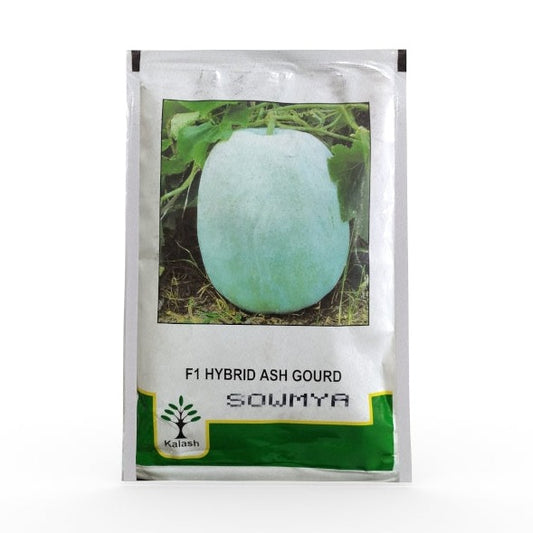
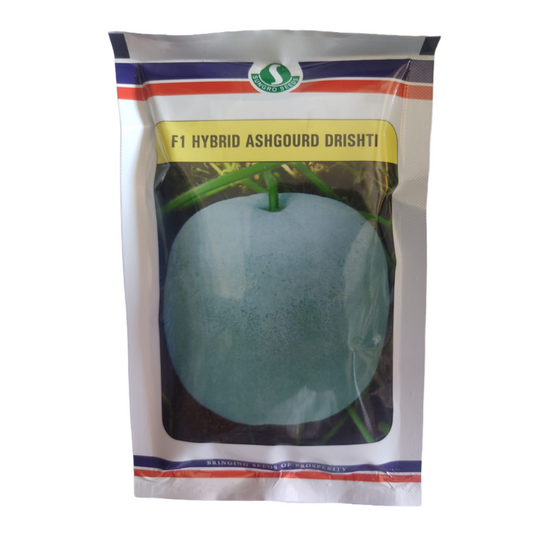 Sold out
Sold out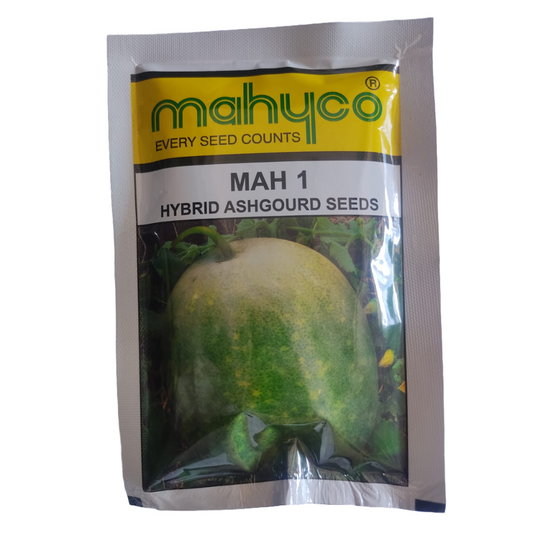
 Sold out
Sold out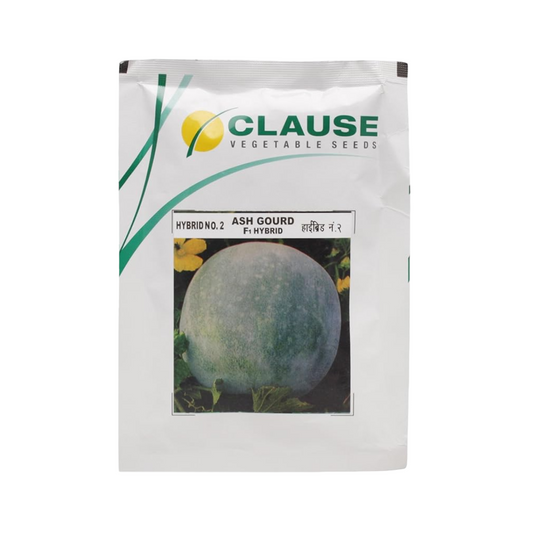 Sold out
Sold out Sold out
Sold out Sold out
Sold out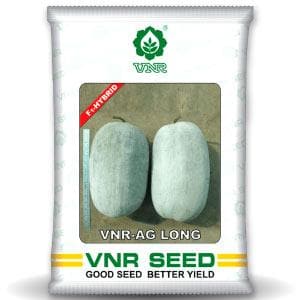 Sold out
Sold out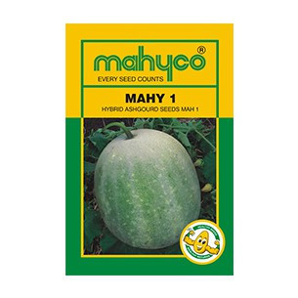 Sold out
Sold out









